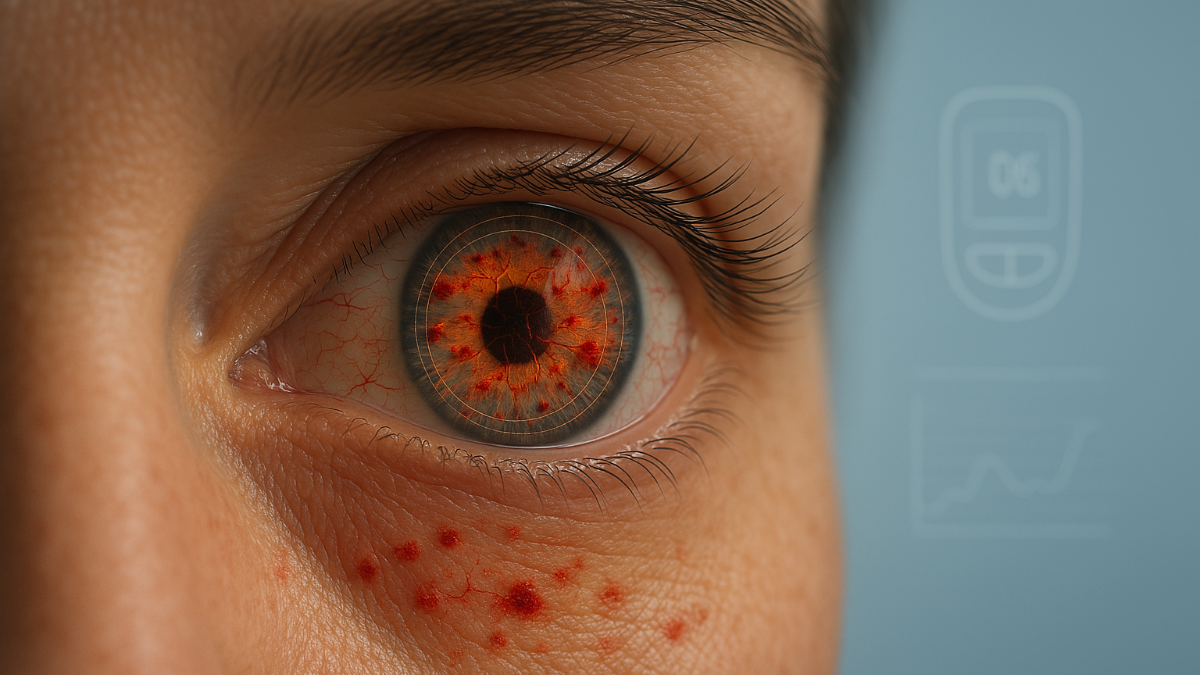New Advances Bring Hope in Preventing Vision Loss from Diabetic Retinopathy
Updated: April 6, 2025

Diabetic retinopathy is an eye problem that comes from high blood sugar sticking around too long, hurting the tiny blood vessels in the retina, the part of your eye that sees light. It's a big reason adults lose their sight, though good care can often stop that. With diabetes growing worldwide, from 463 million people in 2019 to an expected 700 million by 2045, according to the International Diabetes Federation, more folks will deal with this down the line. This blog walks through its stages, causes, symptoms, how it's found, and what can fix it, plus some new ideas.
Understanding the Stages
Diabetic retinopathy builds up in two main steps, showing how it gets worse if not caught early.
Non-Proliferative Diabetic Retinopathy (NPDR)
This is the starting point. Small bulges, called microaneurysms, show up in the retina's blood vessels. They might leak fluid or blood, causing trouble. If the macula, the spot that sharpens what you see straight ahead, swells up, called macular edema, your vision blurs. Blood flow to the macula can get blocked too, known as macular ischemia. NPDR can be mild with barely any signs or turn serious, hitting your sight hard. Testing tools stay in steady use as people try to spot it soon.
Proliferative Diabetic Retinopathy (PDR)
Things step up here. The retina, short on oxygen, grows new blood vessels on its surface, a process called neovascularization. These vessels break easily, spilling blood into the eye's middle, known as vitreous hemorrhage, which clouds what you see. Scar tissue can form, pulling the retina loose and causing detachment. If PDR isn't handled fast, blindness is a real worry. Treatments and surgery supplies stay in regular need at this point.
Recognizing the Symptoms
Early on, diabetic retinopathy stays quiet, slipping by unnoticed. That's why regular eye checkups matter so much. When signs pop up, you might notice:
- Vision that blurs or twists, making small print challenging.
- Dark spots or floaters drifting in your view.
- Trouble seeing in dim light, like at night.
- Sudden changes in how clear things look.
- Losing part or all of your sight.
Macular edema can hit quickly, dimming vision with little warning. Catching it early with checkups is the best way to keep damage away.
What Causes Diabetic Retinopathy?
It starts with high blood sugar over time. The retina's blood vessels weaken, swell, leak, or shut down, cutting oxygen to the tissue. High blood pressure and cholesterol make it worse. Keeping blood sugar steady and aiming for an HbA1c below 7%, as the American Diabetes Association suggests, greatly lowers the risk. It's a simple move that ties into things people use to stay ahead of it.
Diagnosis Methods
Doctors have a few good ways to spot diabetic retinopathy and see how bad it is.
Visual Acuity Test
This is the eye chart test you've seen. You read letters from a distance to check how well you see up close and far off.
Pupil Dilation
Drops widen your pupils so the doctor can look at your retina with tools like an ophthalmoscope or slit lamp. It's a direct way to find anything off.
Fluorescein Angiography
A yellow dye goes into your arm vein, flows to your eye, and lights up blood vessels in pictures. It shows leaks or blocks hurting your sight. Imaging gear gets plenty of use here.
Optical Coherence Tomography (OCT)
OCT takes clear pictures inside the retina, showing its layers. It spots swelling or fluid in the macula, helping doctors see what's wrong. It's a tool more people rely on now. Artificial intelligence (AI) is helping as well. It scans retina pictures and picks up early signs accurately, reaching places where eye doctors are hard to find.
Treatment Options
There's a mix of ways to handle diabetic retinopathy, from daily steps to bigger fixes.
Medical Control
Keeping blood sugar and blood pressure steady slows or stops the harm. Continuous glucose monitors, backed by the NEI, help people manage diabetes and keep their eyes safe.
Anti-VEGF Therapy
These shots block a protein called VEGF that makes bad vessels grow and leak. Drugs like ranibizumab and aflibercept ease swelling and save vision, per AAO studies. They are a common pick, keeping suppliers active with steady orders.
Laser Surgery
Laser photocoagulation seals leaky vessels or shrinks odd growths to avoid bigger problems. Micropulse lasers, a newer take, hit the mark with less damage around it. It's a solid option that keeps laser tools in demand.
Vitrectomy
Vitrectomy clears things up and fixes the damage for tough cases like blood in the eye or a detached retina. It's a serious move with risks like infection or tears, but it works when others do not.
Emerging Therapies
New ideas are coming along. Gene therapy tweaks what's causing the trouble, while stem cells might regrow retina tissue, per NEI research. Nanotechnology could deliver drugs better, cutting down shots. These are early but could change what's out there later.
Looking Beyond Treatment
Telemedicine and AI are changing how people get eye checks, reaching far-off places faster. Down the road, gene editing and nano-drugs might offer lasting fixes instead of temporary ones.
Stopping preventable blindness takes a team effort, with doctors, researchers, and companies all pitching in. Early checkups and fresh treatments can lighten diabetic retinopathy's impact, helping lots of people see better for longer.
Conclusion
Diabetic retinopathy gives people tangible ways to keep their sight, like steady blood sugar or timely doctor visits. For small B2B suppliers, it's a chance to offer testing tools, shots, or surgery aids that people keep needing.